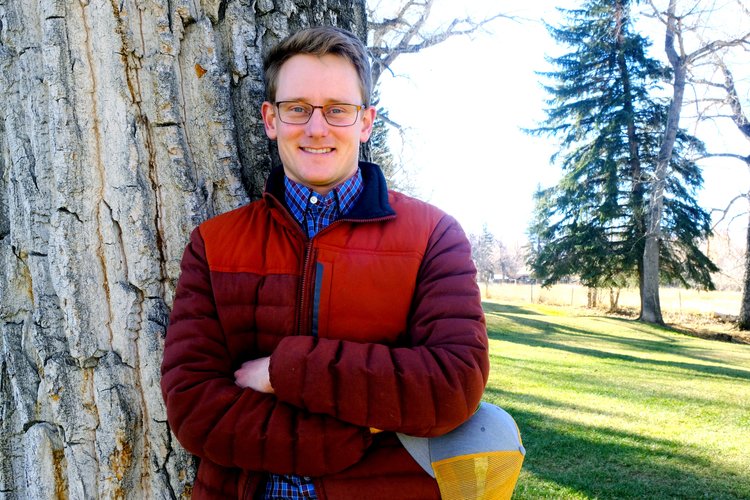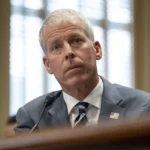A Conservation Advocate’s Take on Environmental Issues
Water quality and quantity and climate change seen as big concerns
- Published In: Other News & Features
- Last Updated: Jul 22, 2022

By Shen Wu Tan
Special to the Wyoming Truth
A recent Supreme Court ruling that limits the Environmental Protection Agency’s authority to regulate carbon dioxide emissions drew applause from Gov. Mark Gordon and many in Wyoming’s energy industry. The ruling, issued June 30, stated that it is not plausible for Congress to give the EPA the authority to adopt a “regulatory scheme” that would cap carbon dioxide emissions “at a level that will force a nationwide transition away from the use of coal to generate electricity.” The high court ruled a decision of that magnitude lies with Congress itself.

Not everyone in the Cowboy State embraced the court’s decision. Count John Burrows, a conservation advocate with the Wyoming Outdoor Council, among them.
Burrows, 30, who resides in Lander, Wyoming, joined the Wyoming Outdoor Council in 2019, armed with degrees in environmental studies from the University of North Carolina Chapel Hill and environmental management from Duke University. Growing up in Brevard, North Carolina, he enjoyed camping, fishing and exploring the great outdoors. A family vacation brought Burrows to Wyoming at age six, and memories of their time in the mountains, he said, “got burned into my head in a way that I’ve never been able to forget.” That experience inspired Burrows to pursue a career where he could help protect the landscapes and environment that captured his young heart.
The Wyoming Truth recently caught up with Burrows to discuss the Supreme Court’s ruling on carbon dioxide emissions, the environmental challenges in Wyoming, climate change and green energy.
How will the court’s decision affect the environment and the energy industry in Wyoming?
Burrows: It’s a disappointing ruling that will make it harder for the EPA to systematically address reducing greenhouse gasses and make it harder to develop the large-scale solutions needed to tackle climate change. I also think it is unlikely to change the underlying market forces that are causing declines in areas of Wyoming’s energy industry. It’s likely there will be more regulatory uncertainty and inconsistency between different states and regions that regulate greenhouse gas emissions differently. This will probably pose challenges for energy exporting states, not to mention the many challenges posed to Wyoming communities by climate change itself.
What conservation and environmental issues in Wyoming need to be addressed?
Burrows: I think issues surrounding water quality and quantity are probably going to be some of the biggest that our state has to address in the future. Research and studies continue to suggest that the future will be hotter and more water limited. Most of us in Wyoming live in an arid landscape and depend heavily on mountain snow melt for drinking water, irrigation and many of the activities that we enjoy. We are already looking at major water shortages on the Colorado River that could have big implications for Wyoming, as well as depletions in critical underground aquifers in the eastern part of the state.
Tell us about the conservation initiatives that are underway in Wyoming.
Burrows: There are many important conservation efforts going on across the state, from efforts to protect the water quality of Boysen Reservoir and the Wind River, to protecting unique historic and cultural landscapes like Wyoming’s Red Desert. We’ve been involved in important efforts to help designate migration corridors for big game species, consider ways to improve the siting of renewable energy and work with state and federal partners in land management planning. Chances are, if it’s a beloved natural area in the state, there is probably a group working to protect or advocate for it.
What is the Wyoming Outdoor Council focusing on at the moment?
Burrows: We currently have staff working across different program areas including air quality, water quality, renewable energy, climate change, and on oil and gas lease sale issues.
Is Wyoming starting to transition to using cleaner, green energy?
Burrows: “We are starting to move in that direction and explore some new possibilities with cleaner energy and new technologies. Many people don’t realize that Wyoming is a major producer of wind energy and that it makes up roughly 10% of in-state energy production. The Chokecherry Sierra Madre wind facility in Carbon County will be the largest wind farm in the country. In recent years, we’ve also seen the state’s first utility scale solar project in Sweetwater County and know that there are more projects being planned and valuable lessons being learned. Of course, there is much more we can and should be doing. Right now, we are seeing more vocal state efforts to diversify our energy production by investing in new technologies like hydrogen, carbon capture and cleaner natural gas production.
What’s your take on climate change? How does Wyoming contribute to it?
Burrows: The scientific consensus on the matter is that the climate is changing and that scientists know that these changes have been driven by people since the beginning of the industrial revolution. The more we delay in acting to reduce emissions, the harder it will be to keep global temperatures under the thresholds needed to avoid devastating changes by the end of the century. Wyoming is contributing heavily to the emissions that are causing this issue and that’s largely because of the huge amount of fossil fuel energy we export to other states and countries. This business model worked well for the state, up until we really started understanding the urgency of addressing climate change. Now, it puts us in a very vulnerable situation as a major fossil fuel exporter.
Are there any efforts in the state to help combat climate change?
Burrows: This is a challenging issue for Wyoming. Fossil fuel revenues make up the majority of our state budget—somewhere in the 50%-60% range—and until we can figure out how to diversify our economy to lessen this dependency, it’s going to be a very difficult issue for the state to lead on… Where I am optimistic is that we are starting to see climate change being taken very seriously at the local levels around the state, because of the threat it poses [to] local communities. Just look at the flooding we saw in Yellowstone this year or the 2020 Mullen fire in the Medicine Bow National Forest. There are efforts underway in Lander, Jackson, and Laramie working on addressing climate change at a community level, and these efforts add up in small and connected states like Wyoming. Many of the solutions being discussed are actually helping local governments and communities save money by using energy more efficiently, reducing risk or exposure to extreme weather events, or cutting operations costs directly.
What environmental issues are close to your heart?
Burrows: Perhaps it’s because I grew up with a fishing pole in my hand, but I always come back to water as our most precious resource. It connects all aspects of our lives in Wyoming and can so easily be taken for granted. More work needs to be done in this space to secure collaborative solutions that help communities stay resilient and ensure sufficient in-stream flows for habitat and recreational purposes.
What impact do you hope the council’s work will have on Wyoming?
Burrows: Our mission…is to protect Wyoming’s quality of life now and for future generations. That’s a heavy lift. But more specifically, I often think of our work as giving representation to the things that we all love but that can’t show up to represent themselves. This advocacy is one of the most important things we do in our work and [the] legacy I hope to build during my time at WOC.













